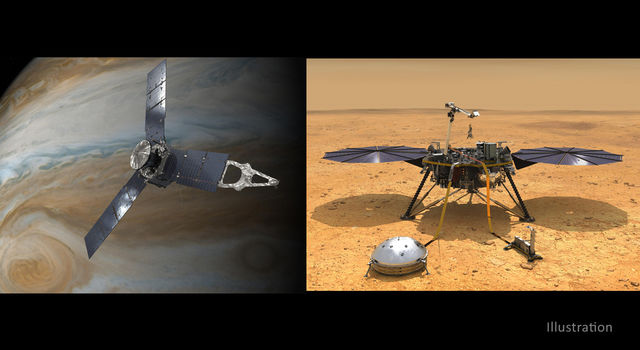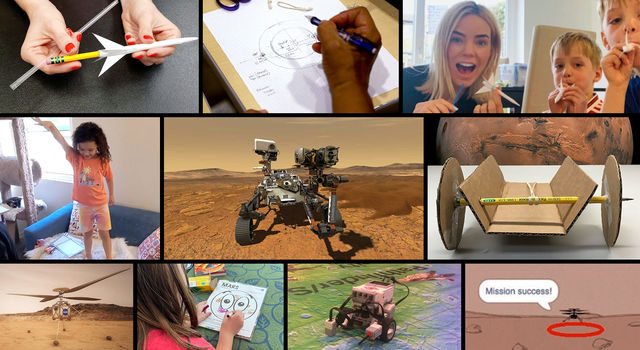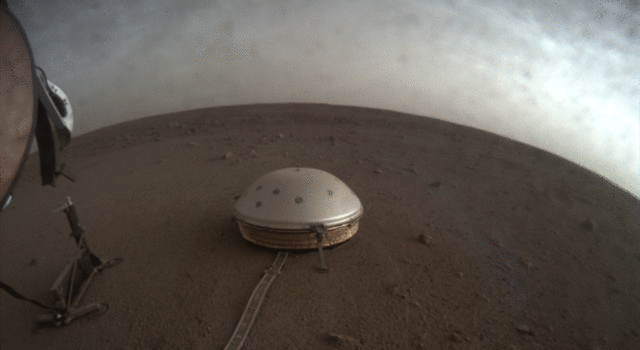Blogs | Dawn Journal | July 28, 2009
July 2009
Dear Indawnfatigables,
Shhhh! Dawn is in “quiet cruise,” and we do not want to disturb it. The indefatigable spacecraft is devoting most of its time to thrusting with its ion propulsion system, applying a gentle but persistent pressure to its trajectory around the Sun. With patience, it will reshape its orbit to match those of the mysterious and intriguing protoplanets Vesta and Ceres. In order to conduct its detailed explorations of each of these exotic worlds, Dawn will accompany them around the Sun, visiting with Vesta in 2011 - 2012 and rendezvousing with Ceres in 2015.
Today Dawn is 220 million kilometers (137 million miles) from the star at the solar system’s center. We can express this more conveniently by recalling the ruler so often used in describing interplanetary distances, the astronomical unit (AU). The average distance between Earth and the Sun, nearly 150 million kilometers (93 million miles), is defined to be 1 AU. (For comparison, Mars, whose orbit is not as circular as Earth’s, travels between about 1.38 AU and 1.67 AU.) Today Dawn is 1.47 AU from the star at the solar system’s center.
If the spacecraft stopped thrusting now, well, gosh, that would be a disappointment! But let’s calm down and think about it anyway. Its momentum would keep it going around the Sun in an elliptical orbit that ranged from about 1.38 AU to 1.84 AU. Vesta, the first stop on Dawn’s solar system itinerary, lives between 2.15 AU and 2.57 AU. Dawn has a lot of work left to do!
The task is far more difficult than simply enlarging its orbit to have precisely the same shape as Vesta’s. In addition, Dawn has to change the orientation of its orbit so it overlaps Vesta’s. Even that is not sufficient, however, because the spacecraft also has to be in the same place in its orbit that Vesta is in its. It wouldn’t be helpful to be on exactly the same path but be very far apart.
Still, let’s consider just the problem of changing the size of the orbit. If Dawn thrust all day today but stopped tomorrow, the one day’s worth of work would change the orbit by only about 0.0004 AU. For another perspective on the effect of the thrusting, compare the orbit size 2 paragraphs above with the orbit Dawn was in after the boost from Mars. The difference is the result of 7 weeks of powered flight, yet on the scale of these vast distances, it is so small it barely registers. Yes, there is indeed a great deal of work ahead.
Dawn will reach Vesta in about 2 years. The key to getting there is the combination of the extraordinary efficiency of the ion propulsion system with the patience and reliability of all systems. The probe’s persistence in quiet cruise will pay off with the excitement of its discoveries in the asteroid belt.
Now why is this deemed “quiet cruise”? It’s true that in space no one can hear you thrust, but that’s not the reason. Rather, it is considered quiet because the spacecraft is not engaging in any special routines or functions (assuming you don’t consider traveling for years in deep space to be special). Thrusting is Dawn’s most familiar activity. Even with the long coast from October 31, 2008 to June 8, Dawn has spent about half of its time since launch tirelessly adjusting its orbit. In contrast, the great preponderance of spacecraft coast all of the time (or nearly so), just as planets and asteroids do, simply going where their orbits take them.
Dawn has already had plenty of time in space that was not quiet (readers of these logs have shared in some such times), and much more lies ahead, particularly when it is in orbit around its two very distant targets. For now though, the spacecraft’s focus is on its trek to Vesta. While its engineering colleagues will continue to be diligent in maintaining Dawn’s health and providing regular updates to its flight plan, the quiet cruise does afford the team more time to develop and refine plans for operations at Vesta. A great deal of work remains to prepare for that not-so-quiet time.
But really, how quiet is quiet cruise? In fact, Dawn is a hive of activity. For the probe to reach its targets in the asteroid belt, all engineering systems labor together. For the following discussion, reminders of the essentials of each of these systems are available by clicking here (note that this link works only for loyal readers), and another detail is available here.
For the ion propulsion system to keep emitting a steady stream of high-speed xenon ions, it must regulate the delicate flow of xenon from the main tank at more than 1000 pounds per square inch (for you readers on Earth, that’s about 70 times atmospheric pressure, and for you readers on Venus, that’s low pressure) to the thruster at roughly one millionth of a pound per square inch (around one ten-millionth of atmospheric pressure). It constantly ionizes the xenon and electrically accelerates it, requiring careful control of the high currents and voltages. The electrical power system delivers to the ion propulsion system the needed power; it supplies all other systems as well. It draws its energy from the solar array wings and converts it to the voltage its onboard customers need.
To keep the huge arrays pointed at the Sun and the ion thruster aimed in the direction needed to travel to Vesta, the attitude control system is always at work. Five times every second it takes a fix with its star tracker and computes the orientation, or “attitude,” of the craft in the void of space. If needed, it rotates the solar arrays, and it uses several different means to adjust the entire spacecraft’s attitude to achieve the required thruster pointing.
The telecommunications system continually transmits a radio signal through one of the small antennas, broadcasting a very wide beam that encompasses Earth so that mission controllers can listen in whenever they choose. The system is also unceasingly alert, listening for an almost imperceptible radio whisper from Earth in case human team members need to contact the probe between the weekly sessions that use the main antenna.
Every second the thermal control system reads more than 100 temperature sensors and decides which heaters to turn on or off to keep each component from becoming too cold or too hot.
The command and data handling system, including the main computers, is orchestrating most of this activity. It switches its attention 200 times per second as it communicates with other components. About 35 times every second it assesses all the data available from around the ship and selects some for storage and subsequent transmission to Earth through the main antenna. More than 200 parameters are checked each second so that if there are any problems, the software can take action, promptly issuing instructions to protect the craft and the mission, ensuring unexpected situations do not get out of control. And while performing these and many other functions on its own, every second the software checks to find out whether there is a stored command from mission control. Engineers formulate these directives many weeks in advance and place them onboard to be carried out at the precise second planned.
So quiet cruise really is not so quiet. And yet, this is what Dawn was designed to do. In the forbidding depths of space, all the systems work together in a near frenzy of activity to hold the stalwart ship steady, keeping it healthy and on course, as it maintains its sights on the distant horizon, where the asteroid belt beckons.
Dawn is 275 million kilometers (171 million miles) from Earth, or 710 times as far as the moon and 1.84 times as far as the Sun. Radio signals, traveling at the universal limit of the speed of light, take 31 minutes to make the round trip.
Dr. Marc D. Rayman
12:30 am PDT July 28, 2009
TAGS:DAWN, VESTA, CERES, DWARF PLANET, MISSION, SPACECRAFT







